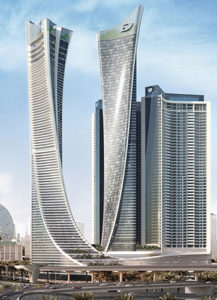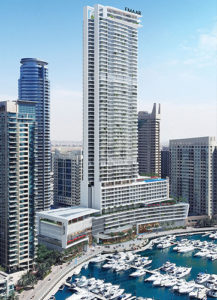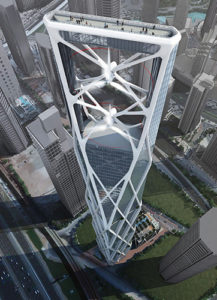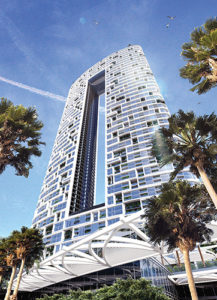Benjamin Piper is a Partner & Design Principal at Killa Design. Here are some excerpts from a recent interview with him…
Tell us about your practice and design approach?
Killa Design is a boutique firm of 60 architects, engineers and supporting staff. We seek out projects that push the boundaries of contemporary design and we aim to go beyond expectations in all that we deliver. We develop and design projects that are culturally and contextually sensitive and are sustainable in their approach.

What inspired you to become an architect?
I have always been interested in a wide variety of fields spanning art, engineering, anthropology and natural science. Architecture was a way for me to keep up a broad range of interests and apply them in an artistic field that is also respected as a profession.
What is your inspiration while designing?
The composition of a façade in on one hand is very pragmatic; one needs to consider optimising external views, maximising internal daylighting levels and the performance of the building envelope all while meeting the budgetary requirements of the project. On the other hand, façade design is a very artistic process in which the qualities of the façade are ‘composed’ in much the same way that an artist may compose an abstract painting. While the process is less constrained, there are still many factors that need to be considered in the design of a façade including the proportion, the psychological impact or ‘feeling’ of the materials.
We are often requested by our clients to look at alternative façades compositions that give very different qualities to the building design. We may, for example, explore a more vertical or more horizontal composition, a more classical or more contemporary ‘feeling’ in the façade – all through the use of different materials, details, proportions and geometry of the façade.

Please highlight your projects featuring very innovative and different kinds of façade and fenestration designs.
By definition, the façade is the most visible part of a building design; it is literally the face of a building. For this reason, the quality and refinement of a building’s façade have a huge impact on how the building is perceived. But the design of the façade goes far beyond purely aesthetic dimensions. It has a huge impact on the overall thermal and acoustic performance of the building and ultimately the comfort of the building’s inhabitants depending on how it responds to the surrounding environmental context.
For example, the façade of the forthcoming “VIDA Marina” project was based on a desire of the client to create a contemporary Miami style of building. In order to create this quality, we used simple white panelised surfaces, timber accents, floor to ceiling glazing, external shading louvers and large balconies that serve as transition spaces from inside to outside.
The “Office of the Future” explored a façade design that resulted from the smooth curvilinear forms of the building. We are currently working on a project where the client is keen for us to explore contrasting façade options that are contemporary, classic and industrial in their form – each with their own unique blend of materiality and detailing.
Could you please tell us about the latest façade and cladding technologies and materials available in the UAE market and those you used in your projects?

It is a real privilege to work as an architect in the UAE because it supports such a vast range of façade specialists, designers and suppliers in the local market. The ambition and scale of the local market have led to the region being a world leader in façade systems and technology, and there is a huge amount of local expertise and insight into the world of façades. We have used many façade systems from the local market in our designs and we are proud to support local industry in this way.
Please brief on technologies you have used in your projects in the recent past.
We are using a variety of technologies in the design of our façades ranging from composite curved panels constructed from glass reinforced plastic bonded with curved stainless steel cladding elements, to robotically fabricated glass fins to hand-rendered finishes. In order to bring such approaches, we need to work handin- hand with the suppliers to develop clever and cost-effective solutions to complex design and construction problems.
What key factors to be considered while designing and installing fenestration?

Depending on the project, there are many key factors to be considered in the design of fenestration. The view out from a window and the sunlight coming through the window are the starting points. But one may also consider how natural ventilation is achieved, the safety of the design from the perspective of users and small children. Clearly cost is often the determining factor in the final selection of given façade systems.
What are your views on the future façade and fenestration technologies as well as materials?
I believe that it is a matter of time until we have fully responsive glazing façades that can adapt to varying solar exposure. As we can see, these advancements happening through the use of new material such as sage glass. I believe that as digital display technology will become increasingly cost-effective, we will see an increasing number of buildings that make use of embedded digital displays that can allow for the live and dynamic adjustment of a building’s façade systems.
How can intelligent façade bring in the greenhouse effect and also restricts the intensive use of air conditioning?
The orientation of a façade clearly makes the biggest difference in terms of how it can be used to either capture or deflect solar thermal energy. If a façade is required to do both of these things at different times of day or year, then it must necessarily be a responsive façade. A responsive façade can either use solid state technology such as sage glass to adapt its performance or it can employ mechanically responsive systems such as dynamic louvers or shading screens.

How do you go about choosing the material of façade and cladding?
It is often a gut feeling, a personal choice when choosing the material qualities of the façade. Sometimes something glassy with stainless steel accents, sometimes something earthy with timber and stone. Sometimes one might opt for bright colours or sometimes for a dark and impenetrable black. While the choice is personal it is also in response to the client, their aspirations and the architect’s interpretation of these aspirations in architectural form and appearance.
What is your advice for young and upcoming architects?
Try to broaden the range of design tools in your repertoire so that you can choose the right tool for the job. Try to always know why you are designing in a particular way – why you are designing something in a particular way is more important than how or what you are designing.














